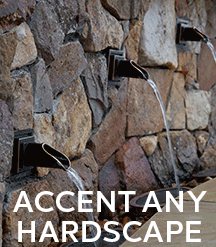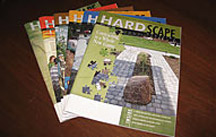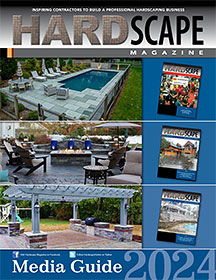Articles written by guest contributors

Weather is not all bad. Between rain showers, the photographer used a 30 second exposure to capture the drama of an electrical storm.
How to take better lighting photos
By Steve Parrott, VOLT® LightingLandscape photography is the supreme test of the photographer – and often the supreme disappointment. – Ansel Adams
Are you embarrassed by the lighting photos on your website? If so, you are not alone. Despite advances in digital cameras, taking night shots is still a challenge. The following guide gives you simple tips and tricks to create outstanding lighting photos.
Get a good camera
No, your smart phone and tablet aren’t up to the task – neither are inexpensive point-and-shoot cameras. Here’s where you need to bite the bullet.- Basic level ($400 to $600) – Gives you manual control and image quality for excellent photos. The Canon Rebel T6 Series (with basic lens) are in this range.
- Mid level ($600 to $1,000) – Same manual controls as the basic level, but includes a better lens for sharper photos with less distortion. Again, the Canon Rebels are good choices – just select a lens upgrade.
- Top level (greater than $1,000) – This budget gets you cameras with larger full-frame sensors for super-sized images, easy-to-use manual controls (especially important in the dark), and an excellent lens. Look to the Canon EOS 5D series.
Note: While only Canon cameras are mentioned here, other manufacturers may give equally excellent results (see Nikon, Sony, and Olympus). Also, be open to used equipment.

Use photos to demonstrate lighting techniques. In this case, show how pools of light create a subtle and understated effect. VOLT® Max Spread Path Light pictured.
Use a tripod
A good tripod is essential. It should be easy-to-use, sturdy, and good for both low and high shots. The tripod head is important – there are 2 main types – ball head and pan head. The ball head is best for video work since it lets you smoothly move your camera in any direction. For photography, I prefer the pan head – a platform secured by 2 knobs – vertical and horizontal. I like this because you can set your camera level, then make minor adjustments without losing your level.Before you shoot
Get permission – Put a photography clause in your contract that gives you permission to photograph the project and use it for promotional purposes. If you don’t have that, then create a short permission form that the client signs before the shoot.Adjust your lighting – While the aiming of your lights may be perfect for humans, the camera really doesn’t like hot spots. I often tilt back spotlights to diminish hot spots on trees and walls.

Focus on a single installed fixture so prospective clients can easily see the effect. VOLT® Articulator Well Light pictured.
Camera settings
Image quality – Only shoot in raw mode. That gives you a huge amount of control in the image editing process. If your camera doesn’t do raw, use the highest quality setting available.Color temperature – This refers to the extent of yellowish or bluish tint to the white light present in the scene. If you are shooting before or during sunset, the color temperature of the ambient light may be as high as 8,000K. After sunset, you are only concerned with the color temperature of your lights – usually 2700K or 3000K. Higher-end cameras let you set the exact color temperature (indicated by the “K” symbol). Don’t worry too much about getting the perfect color temperature since you can adjust that when you edit the image in raw mode.
Exposure – 3 factors determine how much light reaches the image sensor:
- Film speed (ASA or ISO) – A throwback to film days, it relates to the sensitivity of the image sensor and to the presence or lack of noise in the final image. The lower the film speed, the more light is needed and the least amount of noise. Most digital cameras have a minimum film speed of 100 – start with that setting. If ambient light levels become very low, then you may need to increase the film speed to 200 or 400 – higher numbers may result in a very noisy (grainy) image.
- Aperture – Just as a human eye has an iris that narrows or widens in response to light, the camera also has an iris that can be adjusted to reduce or increase the amount of light hitting the sensor. The extent to which the iris is opened or closed is measured in f-stops. Smaller f-stops (such as f1.4 or f1.7) mean larger openings to let in more light. Larger f-stops (such as f16 or f22) are very small openings. The ideal f-stop for maximum image sharpness is in the range of f11 to f22. This range also gives you the greatest depth of field – meaning images close to the camera are nearly as sharp as images far away.
- Shutter speed – The final component that determines exposure is the shutter. This device opens and closes for a set time. Most cameras have shutter speeds ranging from a fraction of a second to 30 seconds. Because landscape lighting levels are so low, very long shutter speeds are needed; the only downside is blurring of the image when plants are moving in the wind.

Tell a story. This photo shows what the homeowner sees when she exits her car and walks towards the front door.
Finding the optimal exposure
Now that we understand the affects of film speed, aperture, and shutter speed, how do we decide the best combinations in the field? Here’s what I do.- Set film speed to 100. Set aperture to f11.
- Compose your first shot. Focus.
- Depress your shutter release halfway (to activate the light meter).
- Look through the lens and find the exposure scale located at the bottom of the image. Note the indicator at the zero point on the scale.
- While still looking through the lens, adjust the shutter speed control until the moving vertical line aligns with the zero point on the scale.
- Take your shot.
- Take 2 more shots at +2 and -2 on the scale.
- Check all 3 images and make sure the exposure on one is about right, and that the others are slightly too dark and too light. If needed, take more shots to ensure you’ve covered the range from too dark to too light. It’s difficult to assess optimal exposure in the field, so take many shots and select the best to edit at your computer.
Make a photo plan
Before taking photos, take some time to think about the range of photos you want to come away with from the site.Tell a story – What is the story you want to tell with these photos? For example, a pathway lined with path lights tells the story of the homeowner walking the path – enjoying the safety, security and beauty. If you took a picture of a portion of the path, does that tell this story? Or would it make more sense to show the beginning and end of the path – from the homeowner’s perspective? In the same way, think of capturing the experience of the homeowner in every region of the design.
Capture the big picture – Always find places where you can shoot the entire house and property. When possible, frame the house under branches. Include objects close to the camera as well as far away – that creates depth.
Capture the little pictures – Take close-ups of illuminated plants and flowers. And, don’t ignore little landscape features such as urns, statues and hardscape details.
Balance the objects in the frame – When you have a scene with 1 or more dominant objects in the foreground, position the camera so the objects look balanced and natural. Very helpful, is the rule of thirds. Imagine your image divided into 3 equal horizontal rows and 3 equal vertical columns. Position the frame so objects or boundaries align with one or more of these divisions.
Elevation – Look to mix up the elevation of your shots. I always bring a ladder to a shoot – and have a clamp that attaches my camera to the top. I also have a tripod that lets me shoot from less than a foot off the ground.
While it’s beyond the scope of this article to explore Photoshop techniques, the bottom line is that you should have some image editing software – at least Photoshop Elements. Your camera may also come with editing software. The minimum requirement is that you have the capability to edit raw images.
Building an impressive portfolio of your project images will go a long way towards establishing your reputation as a skilled landscape lighting designer. Isn’t it time to invest in the photo equipment to make that happen?
Steve Parrott, VOLT® Lighting Communications Director, is well known for his landscape lighting photography. His photos have appeared in numerous trade and design journals. His recent photography can be found in the VOLT® Lighting and AMP® Lighting photo galleries.
Featured photos show products by VOLT® Lighting, designs by Brilliant Nights and Light My Landscape.

Try to reproduce the perceived brightness – as if you were there. VOLT® Articulator Well Light pictured.

Often useful, apply the rule of thirds to your composition. Look at the elements in this photo and see how they align with the grid.

Select a perspective that best shows your work. VOLT® 2-Way Tiki-Brass Torch Light pictured.

Parts of your image will not be illuminated. Increase the exposure (while editing) just enough to see details. VOLT® Articulator Well Light and Max Spread Path Lights pictured.

This seaside resort only uses amber lights to protect nesting turtles. To capture the scene, the photographer received permission to shoot from the roof. VOLT® Elevator Path and Area Lights pictured.

This bright red leaf is made more dramatic by allowing background leaves to go out of focus. This was accomplished with a wide f-stop of f4 and positioning the camera as close to the leaf as possible.

How do you photograph a busy restaurant. Try a 30 second exposure and see the results. VOLT® Infiniti G3 LED Spotlights pictured.

Photographing alabaster tiles and columns are challenging because they absorb and reflect light. In raw mode, decrease the highlight setting. VOLT® Articulator Well Light pictured.









